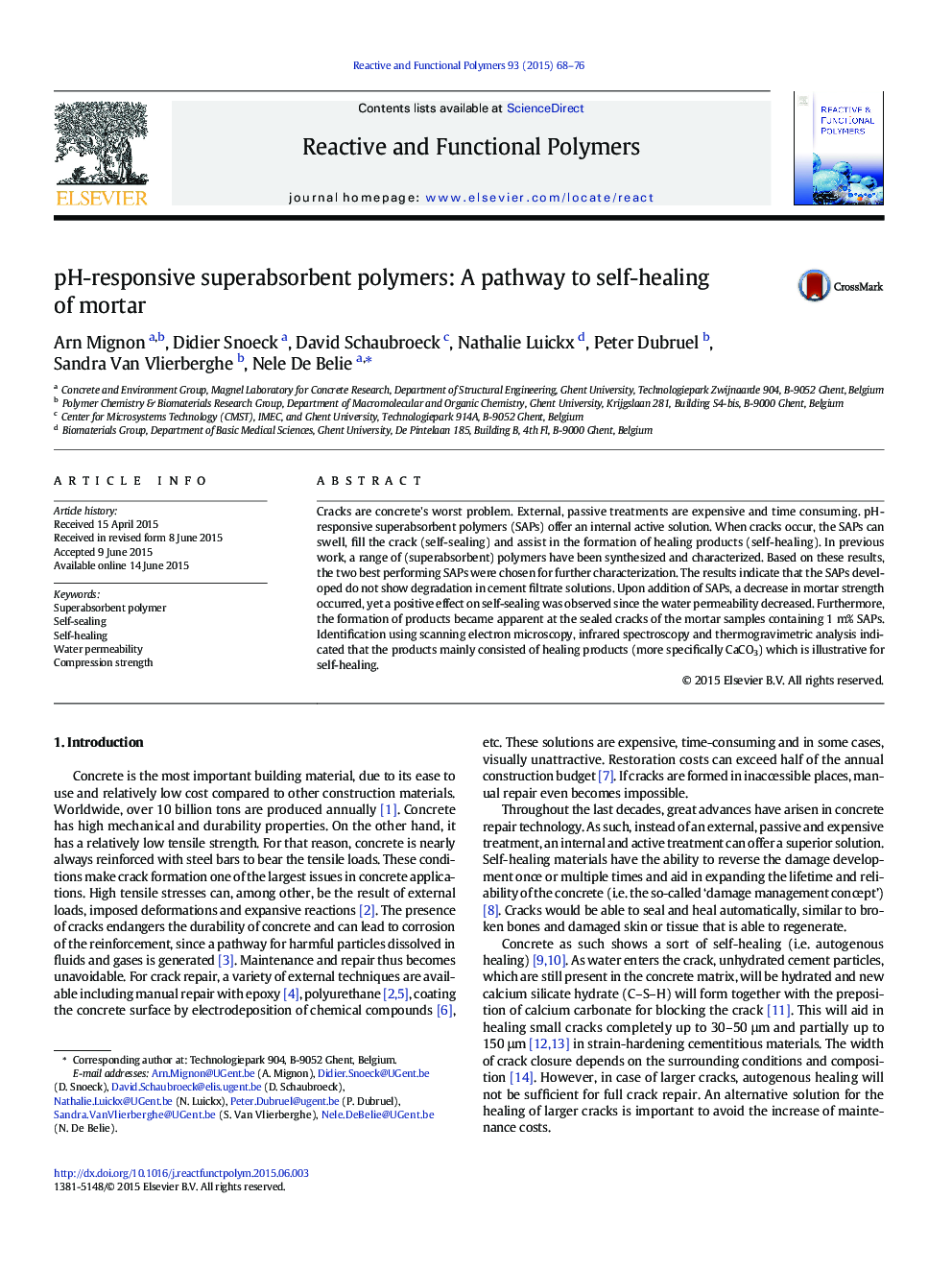| Article ID | Journal | Published Year | Pages | File Type |
|---|---|---|---|---|
| 5209732 | Reactive and Functional Polymers | 2015 | 9 Pages |
Abstract
Cracks are concrete's worst problem. External, passive treatments are expensive and time consuming. pH-responsive superabsorbent polymers (SAPs) offer an internal active solution. When cracks occur, the SAPs can swell, fill the crack (self-sealing) and assist in the formation of healing products (self-healing). In previous work, a range of (superabsorbent) polymers have been synthesized and characterized. Based on these results, the two best performing SAPs were chosen for further characterization. The results indicate that the SAPs developed do not show degradation in cement filtrate solutions. Upon addition of SAPs, a decrease in mortar strength occurred, yet a positive effect on self-sealing was observed since the water permeability decreased. Furthermore, the formation of products became apparent at the sealed cracks of the mortar samples containing 1Â m% SAPs. Identification using scanning electron microscopy, infrared spectroscopy and thermogravimetric analysis indicated that the products mainly consisted of healing products (more specifically CaCO3) which is illustrative for self-healing.
Related Topics
Physical Sciences and Engineering
Chemistry
Organic Chemistry
Authors
Arn Mignon, Didier Snoeck, David Schaubroeck, Nathalie Luickx, Peter Dubruel, Sandra Van Vlierberghe, Nele De Belie,
